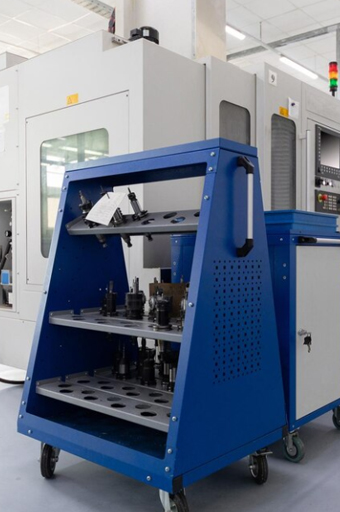What Is CNC Swiss Machining

CNC Swiss Machining
What Is Swiss Machining
Welcome to Durite Screw's guide to Swiss CNC machining. In this comprehensive overview, we'll delve into the history of Swiss machining, its current applications, and future trends shaping the industry.
History Of Swiss Machining
Swiss machining, also known as Swiss-style turning, originated in Switzerland in the late 19th century. It was initially developed to manufacture precision watch components, which required extremely tight tolerances and fine surface finishes. Swiss machining gained popularity due to its unique design, which allows for the simultaneous machining of multiple features on a workpiece with exceptional precision.
The precision and efficiency of Swiss machining allow manufacturers to achieve tight tolerances, excellent surface finishes, and superior dimensional accuracy, making it a preferred method for producing high-quality parts in large quantities.
Swiss Machining
Where Swiss Machining Is Today
Today, Swiss machining is widely used across various industries, including medical devices, aerospace, automotive, electronics, and more. Swiss-style lathes feature a sliding headstock and guide bushing, which provide superior support and stability for machining long, slender parts with high aspect ratios. This makes Swiss machining ideal for producing small, intricate components, such as dental implants, bone screws, electronic connectors, and miniature gears.
Swiss Machining
Where Swiss Machining is Going
As technology continues to advance, Swiss machining is poised to evolve and adapt to meet the changing needs of the manufacturing industry. Future trends in Swiss machining are expected to focus on automation, miniaturization, and advanced materials.
Automation
The integration of robotics and automation into Swiss machining processes will enhance productivity, reduce cycle times, and improve overall efficiency. Automated loading and unloading systems, robotic tool changers, and real-time monitoring capabilities will enable lights-out manufacturing and unmanned operation of Swiss-style lathes.
Miniaturization
With the increasing demand for smaller, more intricate components in industries such as medical devices, electronics, and telecommunications, Swiss machining will continue to play a crucial role in manufacturing miniature parts with precision and accuracy. Advances in tooling, cutting technology, and software will enable Swiss-style lathes to produce even smaller and more complex components with ease.
Advanced Materials
The use of advanced materials, such as titanium alloys, stainless steels, and exotic metals, is becoming more prevalent in industries like aerospace, automotive, and medical devices. Swiss machining will continue to evolve to accommodate the machining of these challenging materials, with improvements in cutting tool technology, coolant delivery systems, and process monitoring techniques.
In conclusion, Swiss machining has evolved from its origins in precision watchmaking to become a versatile and indispensable technology in modern manufacturing. With its ability to produce high-quality, intricate components with exceptional precision and efficiency, Swiss machining will continue to play a vital role in industries where tight tolerances and complex geometries are required. As technology advances, Swiss machining will adapt to meet the evolving needs of the manufacturing industry, providing innovative solutions to address new challenges and opportunities. Stay tuned as Durite Screw (Link the previous text to the contact us page.) continues to push the boundaries of Swiss machining technology and deliver cutting-edge solutions to our valued customers.
